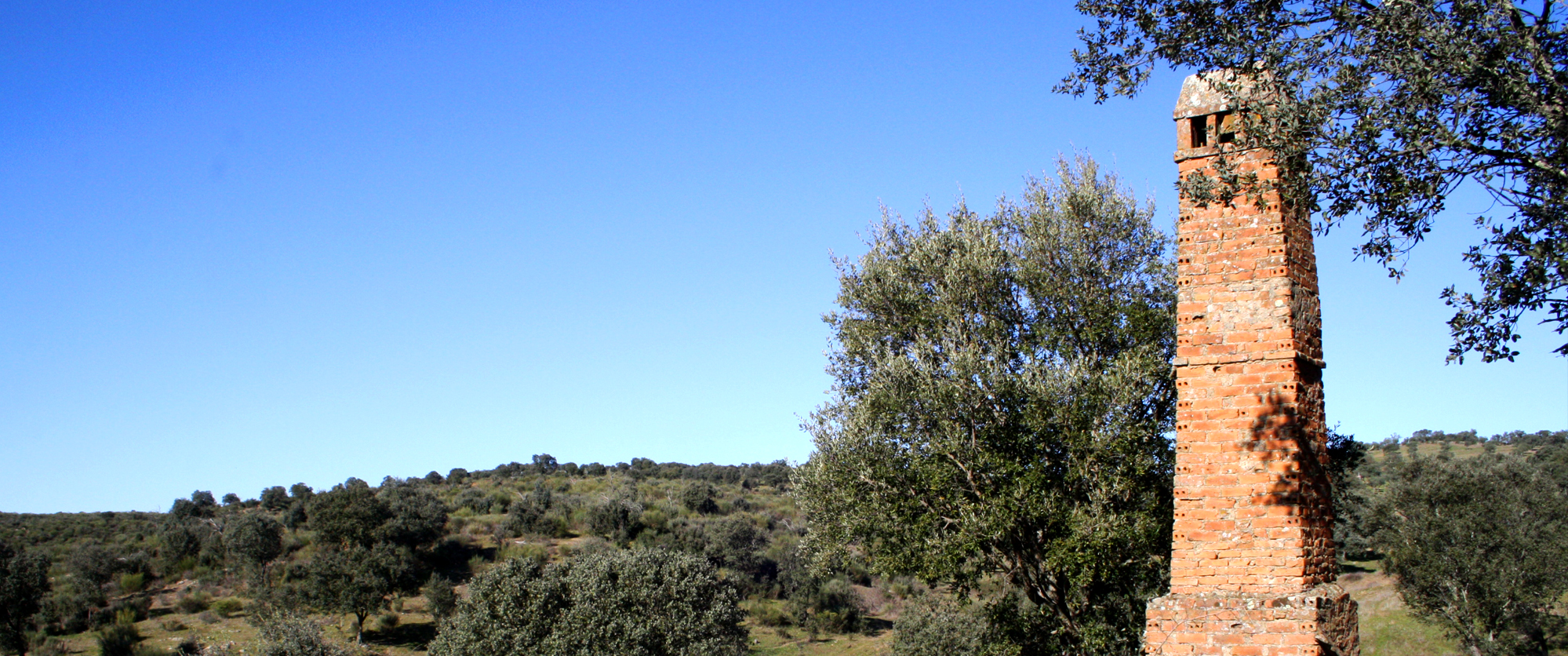Segura Mines, Segura
Since the middle of the 19th century, and for approximately 100 years, the varied mineral resources of the Segura region were exploited in a more or less systematic manner. A mining complex was built in Segura, one of the most relevant in all of the Naturtejo Geopark. Mineral deposits of economic interest occur in association with veins of quartz and barite. These intrusive bodies along fractures originate from an intimate relationship with the presence of granite masses. The tungsten and tin occur in sub-horizontal veins; while lead and barite occur in relation to sub-vertical dominant fracturing, in a NE-SW direction. All of the mining exploitations are currently abandoned, although gold and other geological resources exploration continues. In Segura Mines it is possible to discover an ancient location of mineral plant and casting, by rock piles from the old lead mines and by the old wells of tungsten and tin, all of which comprise unequalled testimony to the evolution of technologies employed for the exploitation of a large variety of mineral deposits of a sub-volcanic nature.
CHARACTERISTICS
City: Segura
Postal Code: 0 - 000
Telephone: 272320176
Email: geral@naturtejo.com
Website: http://www.naturtejo.com
Specific Conditions:
Guided tours by specialised technicians from the Geopark Naturtejo are paid for in accordance with the number of participants.
Method:
On foot
Difficulty Level:
Average
Group Visits:
Yes
Minimum Number of Person per group:
2
Maximum Number of Person per group:
0
Observations:
Through advance scheduled reservations.
Guided Tours:
Yes
Observations:
Through advance scheduled reservations.
http://www.turismodocentro.pt/guiaalojamento.pdf
Where to Eat
http://www.cm-idanhanova.pt/turismo/entidades_hoteleiras.html
Cultural Facilities
http://www.cm-idanhanova.pt/cultura/centro_cult_raiano/centro_cult_raiano.html
Security Forces
http://www.portaldasaude.pt/portal/servicos/prestadoresV2/?providerid=387
T. Rodoviário
Agency Name:
Rodoviária da Beira Interior
Telephone Number:
272340120
Parking for private vehicles:
Yes
Fundada pelos romanos no final do século I a.C., é uma aldeia tipicamente beirã, cheia de tradição e testemunhos históricos. O isolamento a que foi sujeita permitiu-lhe preservar muitos dos seus pontos de interesse, entrando assim para o grupo restrito das aldeias históricas de Portugal. A sua preservação e requalificação torna-a num ponto de passagem obrigatório por quem visita a região.
gps: 39.99664 -7.14382
distance: 34km
Lagares de Proença-a-Velha
Este complexo é um notável exemplo da síntese arquitetónica e funcional onde se concentram aspetos relacionados com o trabalho das unidades latifundiárias. Incorpora dois lagares de azeite, uma palheira que funciona como espaço de exposição, área para workshops e ateliers, entre outros. Realiza visitas guiadas e certames de divulgação de tradições e produtos locais.
gps: 40.02507 -7.23979
distance: 45km
Aldeia Histórica de Monsanto
A aldeia de Monsanto proporciona uma experiência única para quem por ela passa. Ergue-se no alto da colina, descendo por estreitas e sinuosas ruas até ao sopé do monte. Para além das esplendorosas casas de granito e xisto destacam-se como atrativos turísticos a Igreja da Misericórdia, a Torre do Relógio, o Castelo, entre outros.
gps: 40.0387 -7.1156
distance: 47km
The history of the twentieth century is deeply marked by the arms race and the two World Wars that ravaged the European continent. During this period, the race for wolfram assumes high importance and remains large-scale until the late 1950s. Portugal emerges as the largest European producer of this mineral, benefiting from the richness of its geological resources, multiplying a little throughout the country the mining explorations that profoundly mark the evolution of the local landscape and economy. With the reduction in demand for this mineral from the middle of the century and the emergence of new producing markets, interest in wolfram in Portugal has declined, leading to the abandonment of explorations. The structures of this golden period of mining in Portugal remain in the landscape, still marking the regions that surround them.








